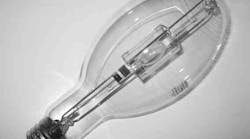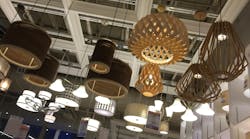The National Electrical Manufacturers Association (NEMA), Rosslyn, Va., has released a new white paper about managing rupture risks in metal halide (MH) lighting systems. NEMA LSD 71-2014 “Best Practices for Metal Halide Lighting Systems Relative to Lamp Rupture Risks,” was developed by the NEMA Light Sources and Luminaire sections to provide updated educational information on the selection, operation, and maintenance of metal halide lighting systems with specific emphasis on the risks associated with lamp rupture.
The eight-page white paper begins with a summary of the value of metal-halide light sources in the market as “one of the great innovations in lighting applications.” Modern MH systems deliver a broad range of light output levels, high efficiency, long life and excellent color rendering.
The authors then outline concerns around arc tube failure and lamp rupture and how those concerns have led lamp manufacturers to include strongly worded warning statements on lamp packaging.
“Virtually all metal halide lamps reach end of life in a benign manner. Because of the high internal operating pressure of the arc tube, however, there is the potential for an arc tube rupture. With only a glass outer envelope surrounding the arc tube, the outer envelope might be breached by particles from an arc tube rupture. If this occurs, hot particles might be ejected from the lamp.”
Metal halide lamps can also suffer a weakening of the arc tube wall from chemical reactions between the tube material and the metal halides.
The white paper details essential practices for minimizing risk of arc tube rupture, including cycling each lamp off for 15 minutes each week in continuously operating installations, though that recommendation isn’t applied as often to Type O lamps which have an integral self-shielding technology that’s lacking in Type E and Type S metal halide lamps.
Best practice recommendations include group relamping on the time frame recommended by the manufacturer, retiring lamps before the end of their rated life, using appropriate ballasts, looking for UL 1598 or CSA C22.2 No. 250.0 listings. Most of all, beware of adding an aftermarket protective lens to the system without consulting the manufacturer and keep the lamps away from combustible material.
NEMA LSD 71-2014 may be downloaded at no charge on the NEMA website.



